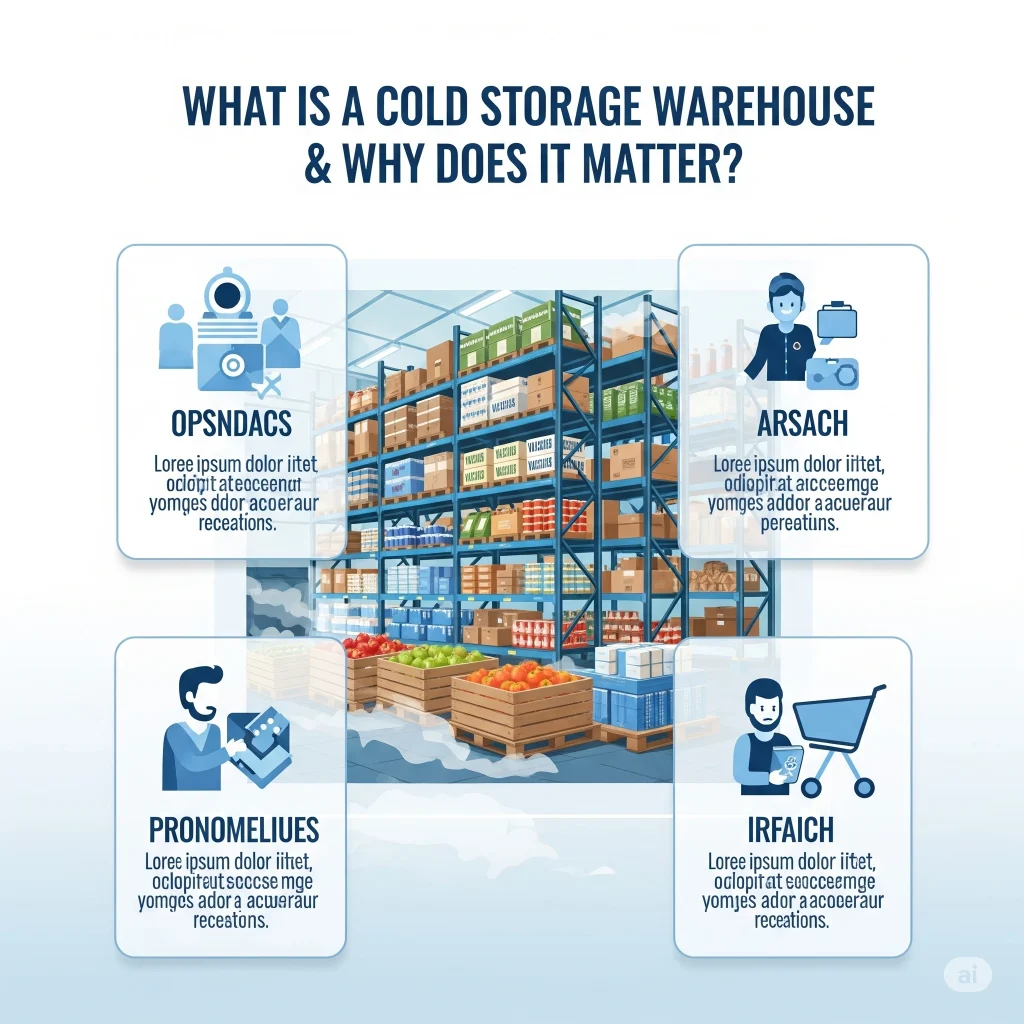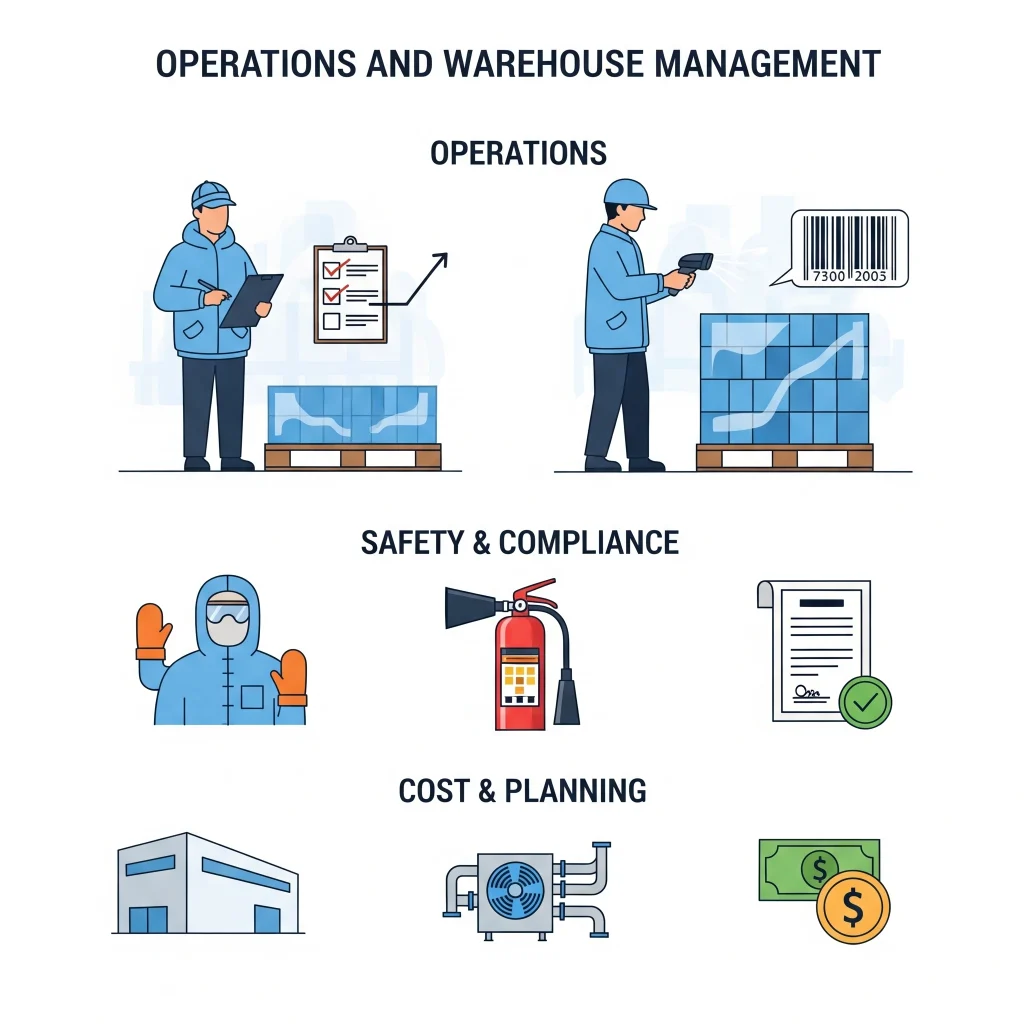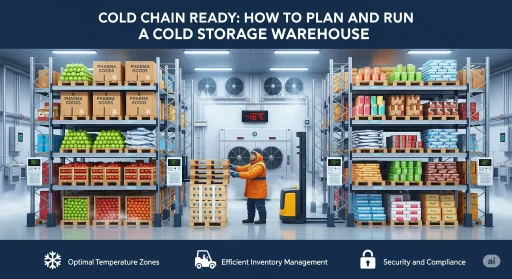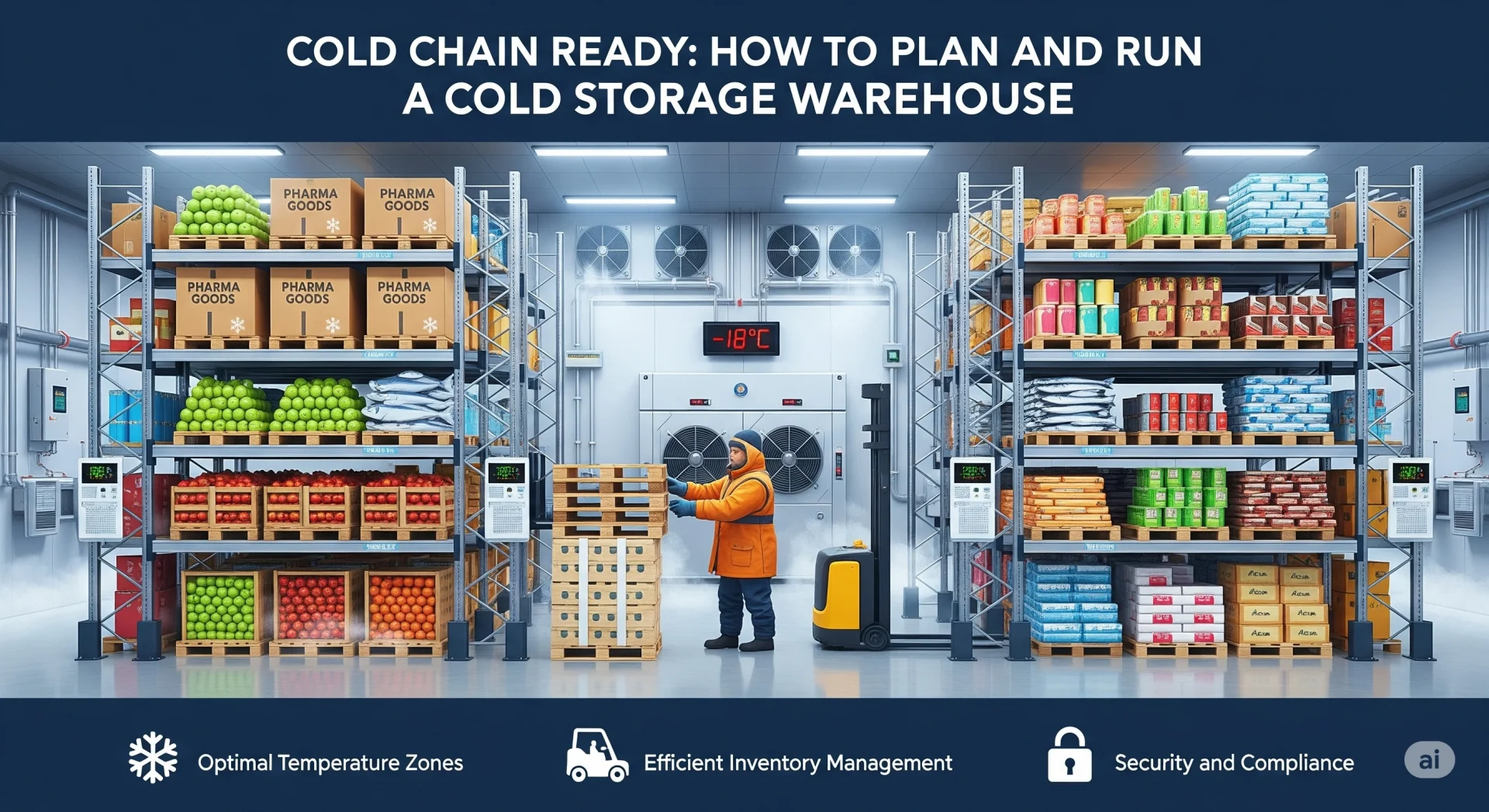Cold storage facilities keep things cool, ensuring that food items medicine, foods and other products that are perishable remain fresher for longer. A well-designed cold storage facility prevents the process of spoilage, safeguards the product’s quality and creates opportunities for processors, growers exporters, and processors.
This guide will explain everything in simple language and in a lively voice the basics of what is a cold storage facility what it is, how it functions with the equipment and layout that you require, location and utility fundamentals, operations and safety as well as costs and business models and the steps to get started the process. We also include useful project and reading resources that you can utilize to design for your personal facility.
What Exactly A Cold Storage Warehouse Is And Why It’s Important
A cold storage warehouse is a building that holds temperature-sensitive goods at a controlled low temperature. The most common uses are for fruits and veggies, dairy products, seafood, meat frozen foods, vaccines as well as some other chemicals. Cold storage can reduce the amount of food wasted, protects food and permits the transportation of food across large distances. When food processors, farmers or retailers utilize an efficient cold storage facility and sell more products, they make more money, and reduce losses.

Types Of Cold Storage Facilities
Cold warehouses can be found in many different types, but the most common are:
- Cold rooms for walk-ins Small rooms that can be used for shops or restaurants.
- Freezers that blast • Freeze items quickly to store them for a long time.
- Multi-purpose cold warehouses Large structures that have several temperature zones (chill freeze, chill deep freeze).
- Controlled air (CA) storage — regulates CO2 and oxygen levels to delay the process of ripening (used for fruit).
- Containers that are refrigerated or cooled storage modular and mobile to allow quick set-up.
Pick the product type based on (fresh fruit or frozen fish) as well as the volume and the length of time you need to keep the items. Read More If You Want To Know How to Start a Profitable Cold Storage
How A Cold Storage Warehouse Works
Cold storage ensures a stable low temperature with refrigeration machines. The key ideas are:
- Insulation helps keep heat out of the building. The thick walls, floors as well as ceiling paneling, as well doorways that are tight reduce energy use.
- Refrigeration systems (compressor condenser, condenser, evaporator) extract heat from inside and transfer it to the outside.
- A circulation system distributes cold air evenly. The ducting and fans help keep the your product at the desired temperature.
- Zones of temperature allow you to store various items in one facility. For instance chill rooms that are 0-4 degrees for fruits and vegetables and freezers with a temperature of 18degC for frozen foods.
- Alarms and monitoring continuously monitor temperature and alert staff in the event that there is a change in.
A well-designed design helps maintain temperature stability and lowers the risk of loss of flavor.
Key Equipment And Layout Essentials For A Cold Warehouse
A well-equipped cold storage facility includes:
- Panels with insulation for roofing and walls as well as an floor system with an insulated floor.
- Industries’ refrigeration systems designed to handle the load of a building and temperature that is the lowest desired.
- Coils for evaporation and fans in every room to ensure even cooling.
- Systems for brine or glycol (in large facilities) to efficiently distribute cold.
- Pallet and rack systems that allow airflow to circulate around products.
- Dock doors fitted with Air curtains, dock levelers and even water jets to limit the entry of warm air when loading.
- System for monitoring temperature that records data with remote alarms.
- backup power (generator/UPS) in order to ensure refrigeration continues to run during blackouts.
- Forklifts as well as cold-rated materials handling apparatus for safe transportation.
- Sanitation as well as drainage systems for waste and cleaning handling.
Layout tip: Design clear flow from inbound to outbound so that your product flows in an orderly line from the dock to staging, storage, packing and dispatch. Read More If you want to know How to Start a Cold Storage Business in India.
Site Selection And Utilities
Find a website that is able to balance accessibility, cost, and services:
- Near markets and producers to cut down on the cost of transport.
- Excellent road access to transport trailers and trucks.
- A reliable electricity source is vital If grid power is not strong, plan for backup generators.
- Drainage and water supply to ensure sanitation and floor cleaning.
- Local permits and zoning Check industry guidelines regarding cold storage areas.
Determine your monthly utility requirements in advance — power for refrigeration is usually the largest the operating expenses.
Operations And Warehouse Management
A good operation keeps food secure and customers satisfied.
- Control of inventory: Use FIFO (first in first out) which means that older products are shipped first. Note lot numbers as well as the best-before dates.
- Procedures for receiving: Check temperature and conditions upon arrival. Reject warm or damaged loads.
- Control of temperature: Log temps hourly Use alarms to detect deviations.
- Health and Pest Control Clean every day, close any gaps, and conduct regular pest checks.
- Personnel training: Train workers in cold safety and proper PPE along with handling procedures.
- Traceability Make sure you keep clear notes so that you can trace everything back to its origin (helps in recalls).
- Calibrating: Regularly calibrate thermometers and sensors to ensure precise monitoring.
A well-run warehouse management reduces losses, increases the process, and safeguards the brand’s value.
Related Article: Starting a Profitable Cold Storage Business
Safety And Compliance
Cold warehouses have particular safety requirements:
- Ice stress, PPE and cold: Offer insulated gloves jackets as well as training to avoid hypothermia.
- Spaces for ventilation and confining: Train staff for safe entry into cold rooms, and offer rescue plans.
- fire safety: Even cold rooms require fire detection and suppression. Install appropriate systems and keep them in good condition.
- food safety standards: Follow HACCP temperatures, record of temperatures, clean logs as well as regional food regulations.
- Dangerous materials: If you store cleaners or chemicals keep them away from areas where food is stored.
Following rules helps avoid fines and protects staff.
For technical details and a complete project blueprint, you can consult NIIR’s recommended book resource.
Cost: Drivers And Project Planning
The most important cost areas:
- Building construction and land (insulated construction).
- Equipment for refrigeration and its installation.
- Racking, docks along with Material handling gear.
- Monitoring and control of temperature systems.
- Back-up power and utility setup.
- Work capital for electricity, wages and insurance until the warehouse is full and then pays.

Business Models And Revenue Streams
Cold storage warehouses can earn money through:
- Storage fees (per pallet per month).
- Handling fees (inbound/outbound forklifts work).
- Services that add value like repackaging and the ripening (for fruit) blast freezing or labelling.
- Temperature-controlled transport if you run reefers or logistics.
- Contracts for the season with exporters or growers for the harvest season.
Mix steady long-term contracts and short-term spot contracts to manage cash flow.
Energy Efficiency And Sustainability
Energy drives are expensive for cold storage. Conserve energy by:
- Utilizing High-Efficient compressors and variable speed drives that use high-efficiency compressors and variable speed.
- Condenser heat recovery to use for office heating or for pre-washing.
- Enhancing insulation and minimizing doors openings using airlocks.
- Installation of lights with LEDs as well as motion sensor.
- In the process of evaluating using solar panels to offset the base load.
Sustainability can also help with customer and support for lenders.
If you’re looking for a comprehensive feasibility plan, a list of machinery as well as financial projections the NIIR cold storage reports offer model estimates and layouts of the plant. A suitable project resource you can use is the NIIR Project Reports page for cold storage planning.
Common Problems And Practical Fixes
- The drift in temperature: Check insulation, ensure that fans are running, and check the levels of refrigerant.
- Frost building up: Improve defrost cycles and airflow.
- Costs for energy: Audit compressors, fix leaks, and heat recovery.
- Pest problems: Seal gaps, ensure cleanliness of the area and schedule pest control.
Regular maintenance can prevent most problems.
How To Start — A Simple Checklist For Entrepreneurs
- Select the products you want to use and capacity.
- Perform market research and make sure you have contracts.
- Find land and permit.
- Plan layouts and purchase refrigeration and racks.
- Set up monitoring, as well as backup power.
- Train and hire staff in the basics of cold handling as well as food safety.
- Start with a pilot launch or phased launch. Then, you can scale it up.
Want To Know About Which Business Idea Would Be Better For You?
Go Through Our Startup Selector Tool
Conclusion
Cold storage warehouses help with food security, cuts down on the amount of waste and also opens market value for various items. With the proper location, an efficient refrigeration designs, efficient operation, and intelligent energy options A cold storage facility can become an efficient business. Make sure you plan carefully, adhere to the food safety guidelines, and begin with a solid plan for the project and expand it as the number of customers and contracts increase.
Cold Storage Warehouse: FAQs
What temperatures are cold warehouses most often using?
Chill rooms typically have temperatures of 0-4 degrees Celsius. Freezers: -18degC. The deep freeze should be -25degC or less. Different products need different zones.
What amount of power can a frigid warehouse require?
Power depends on size as well as insulation the temperature. Refrigeration is often the biggest portion of the electric bill.
A small-scale farm can make use of a modular cold room?
Yes. Modular cold rooms made of prefabricated materials are affordable and easy to set up for cooperatives or small farms.
Cold warehouses require back-up power?
Yes. The backup generators and UPS system are essential for securing storage goods during power interruptions.
What is the best way to find reports on the project of the cold storage warehouse?
NIIR’s cold storage project reports include complete feasibility estimates as well as equipment lists and cost estimates. Check out this NIIR Project Report page, linked above, for a detailed template.







